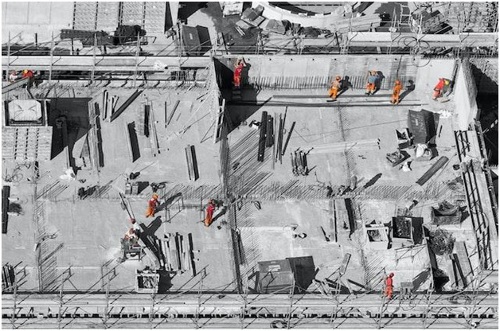Have you ever marveled at the intricate blueprints of a construction project, wondering how these complex designs transform into tangible structures? Welcome to the planet of architectural blueprints?a captivating language that serves because the compass for setting out engineering. On this page, we embark on an enlightening journey to decode the secrets held within these enigmatic plans. So, roll up your sleeves and prepare to unravel the mysteries of architectural blueprints around.
The Language of Lines and Symbols:
Architectural blueprints may appear overwhelming initially, making use of their maze of lines, symbols, and annotations. However, fear not! Once you understand the basic grammar of the blueprints, you'll gain access to a wealth of information. Let's explore the key elements that form the building blocks of architectural drawings.
Floor Plans: The cornerstone of architectural blueprints, floor plans give a bird's-eye view of a building's layout. Rooms, walls, doors, and windows are depicted through lines and symbols. Solid lines typically represent walls, while dashed lines indicate hidden or temporary structures.
Elevations: Elevations offer a vertical perspective, showcasing the fa�ade of a building. These drawings present the height and proportions of exterior features, such as windows, doors, and architectural details. By studying elevations, it is possible to visualize the entire aesthetics of a structure.
Sections: Sections cut through a building, revealing its internal composition. Informative post|Learn here provide insights in to the arrangement of structural elements, such as beams, columns, and partitions. Sections help us understand how different components fit together in three-dimensional space.
Details and Annotations: Every nook and cranny of a construction project is meticulously detailed on architectural blueprints. Annotations explain materials, dimensions, construction techniques, along with other important information. Symbols, such as for example arrows and notes, further clarify specific instructions or call focus on critical details.
Understanding Scale and Measurements:
Among the essential areas of decoding architectural blueprints is comprehending scale and measurements. Blueprints employ scale ratios to represent real-world dimensions. For instance, a 1:50 scale implies that every unit on the drawing equals 50 units in reality. By grasping this idea, you can accurately interpret the proportions and sizes of objects depicted on the blueprints.
Measuring distances on blueprints is also crucial. Scaling rulers or architectural scales will help you determine the length of lines and dimensions between different elements. Paying attention to numerical annotations, such as room dimensions, will provide you with valuable insights in to the physical space.
The Language of Symbols:
Just like a secret code, architectural blueprints employ symbols to mention necessary information concisely. While you'll find so many symbols found in the architectural field, we'll concentrate on a few commonly encountered ones:
Circles with Crosshairs: These symbols represent electrical outlets and switches. The amount of lines within the circle indicates the amount of switches or outlets in a specific location.
Arrowheads: Arrowheads on blueprints indicate the direction side and windows. These symbols help know how these openings swing or slide.
Circles with Dots: These symbols represent light fixtures or ceiling-mounted equipment. The dots within the circle indicate the type and position of the fixture.

Lines with Dashes: Dashed lines on blueprints typically indicate hidden elements, such as plumbing or electrical conduits concealed within walls or ceilings.
Collaborating with Design Professionals:
Decoding architectural blueprints requires collaboration and clear communication with design professionals. Architects, engineers, and designers are invaluable resources who is able to provide insights and explanations regarding the drawings. Please seek their guidance when met with unfamiliar symbols or complex details. By fostering a collaborative approach, you'll enhance your understanding and ensure accurate interpretation of the blueprints
